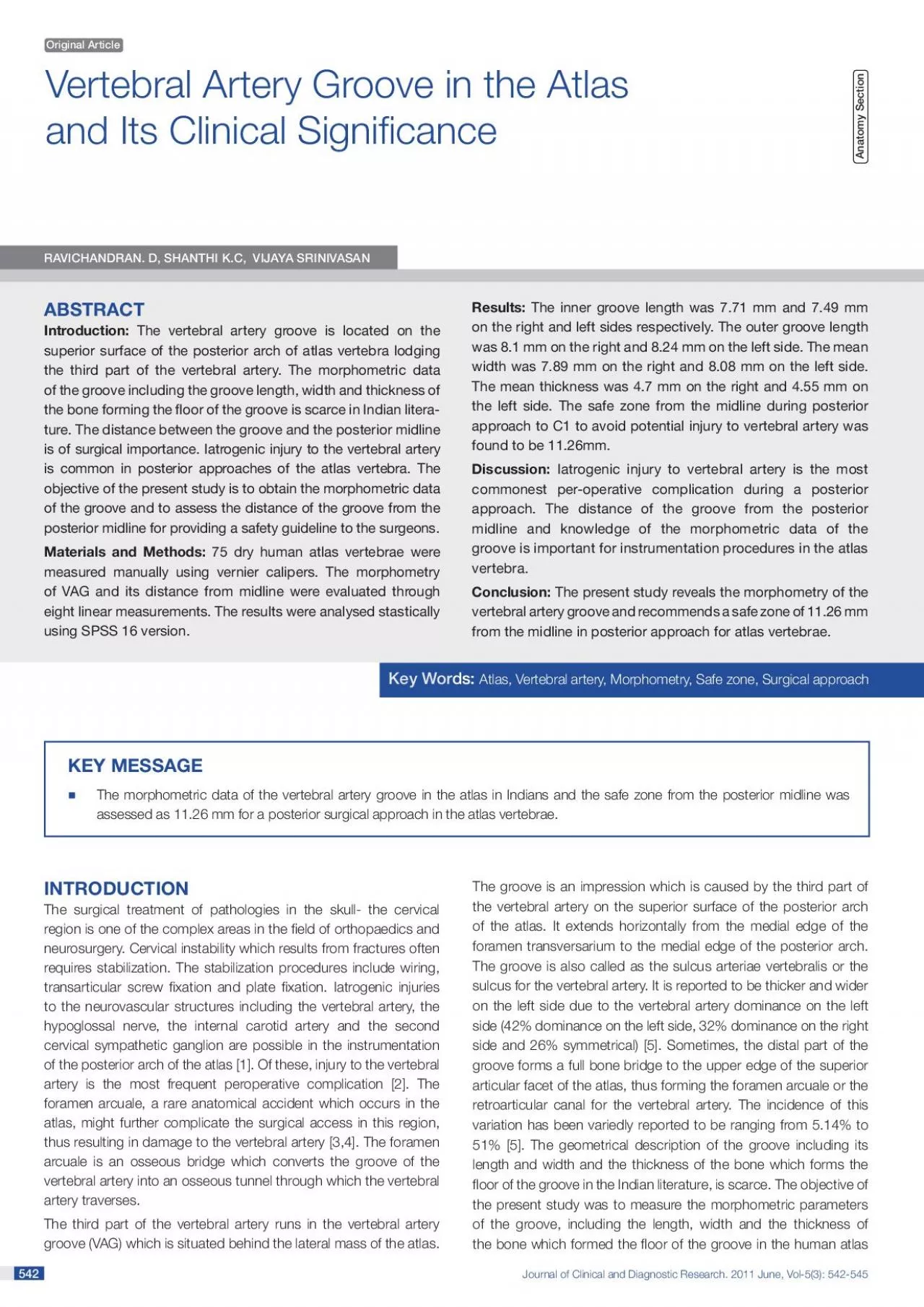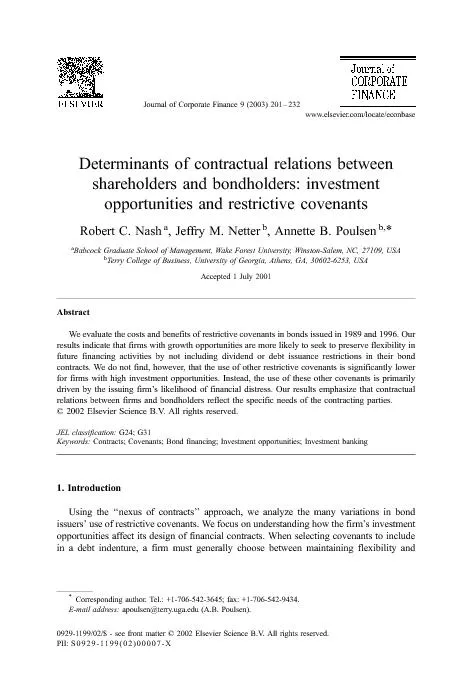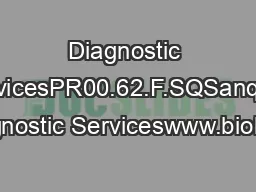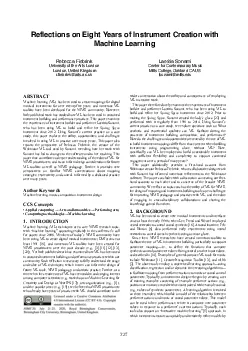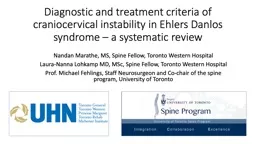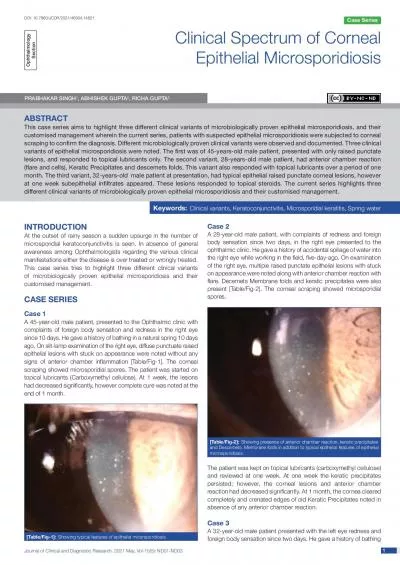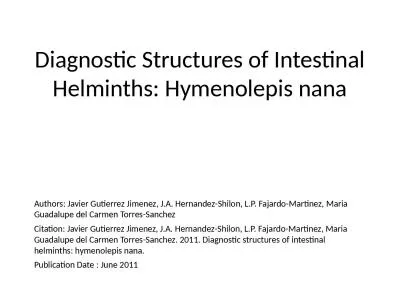PDF-Journal of Clinical and Diagnostic Research 2011 June Vol53 542
Author : bety | Published Date : 2022-08-16
542 542 Vertebral Artery Groove in the Atlas Key WorAtlas Vertebral artery Morphometry Safe zone Surgical approachIntroduction The vertebral artery groove is located
Presentation Embed Code
Download Presentation
Download Presentation The PPT/PDF document "Journal of Clinical and Diagnostic Resea..." is the property of its rightful owner. Permission is granted to download and print the materials on this website for personal, non-commercial use only, and to display it on your personal computer provided you do not modify the materials and that you retain all copyright notices contained in the materials. By downloading content from our website, you accept the terms of this agreement.
Journal of Clinical and Diagnostic Research 2011 June Vol53 542: Transcript
Download Rules Of Document
"Journal of Clinical and Diagnostic Research 2011 June Vol53 542"The content belongs to its owner. You may download and print it for personal use, without modification, and keep all copyright notices. By downloading, you agree to these terms.
Related Documents

